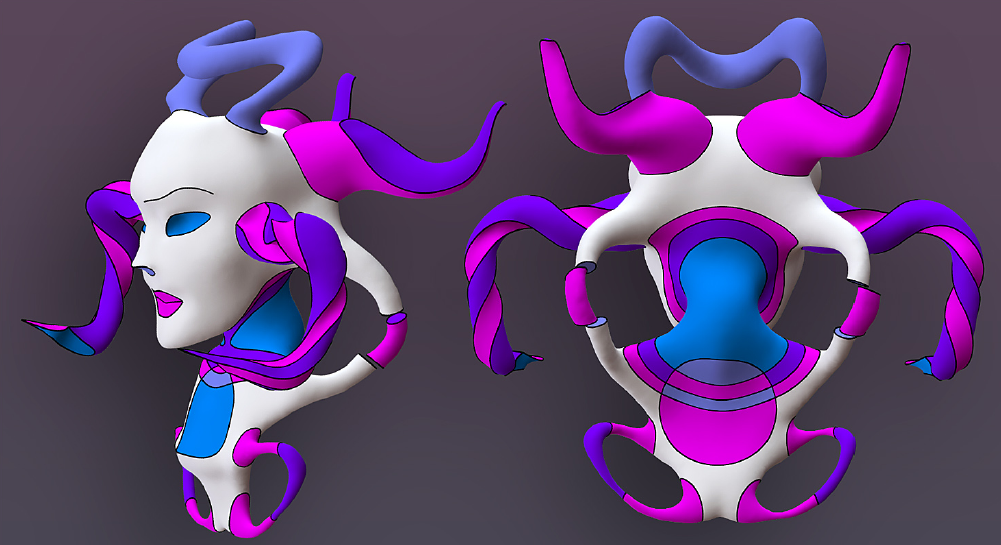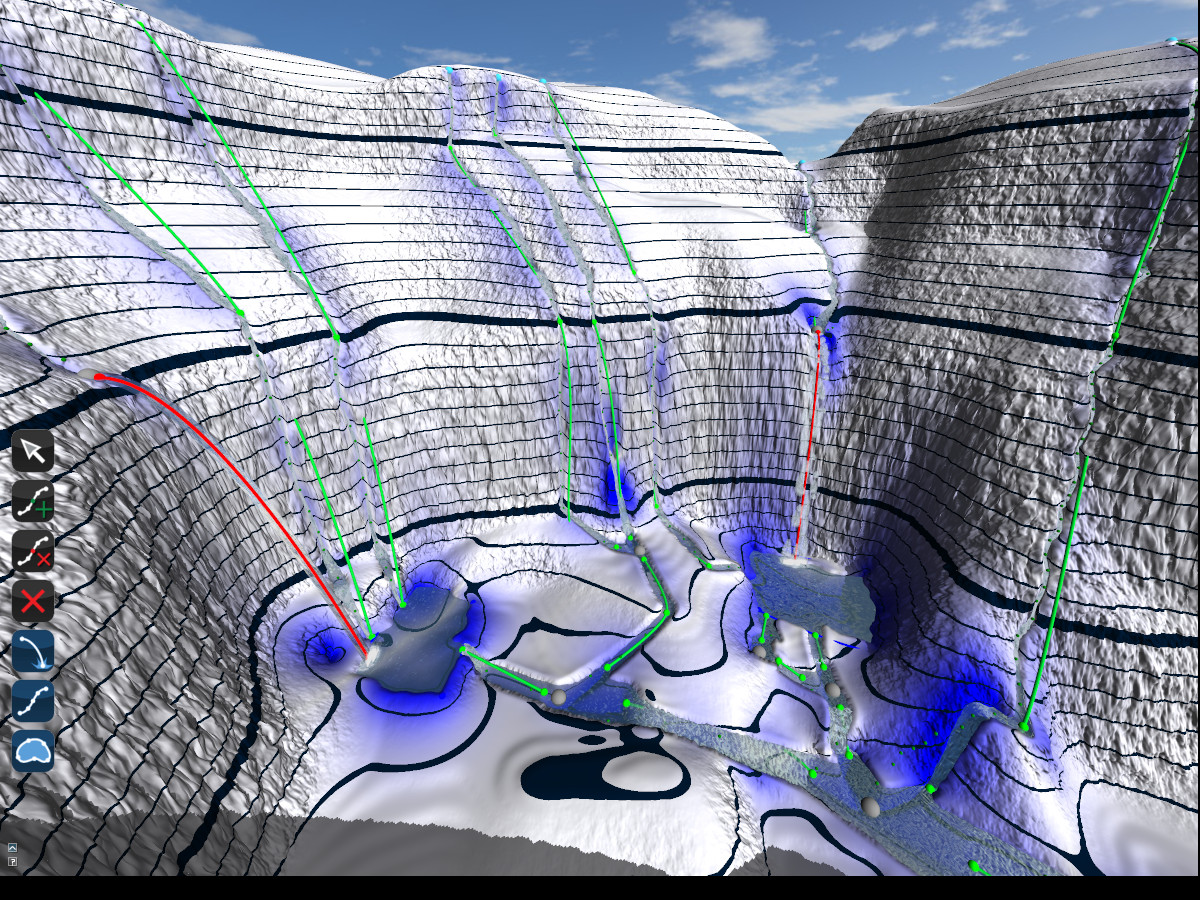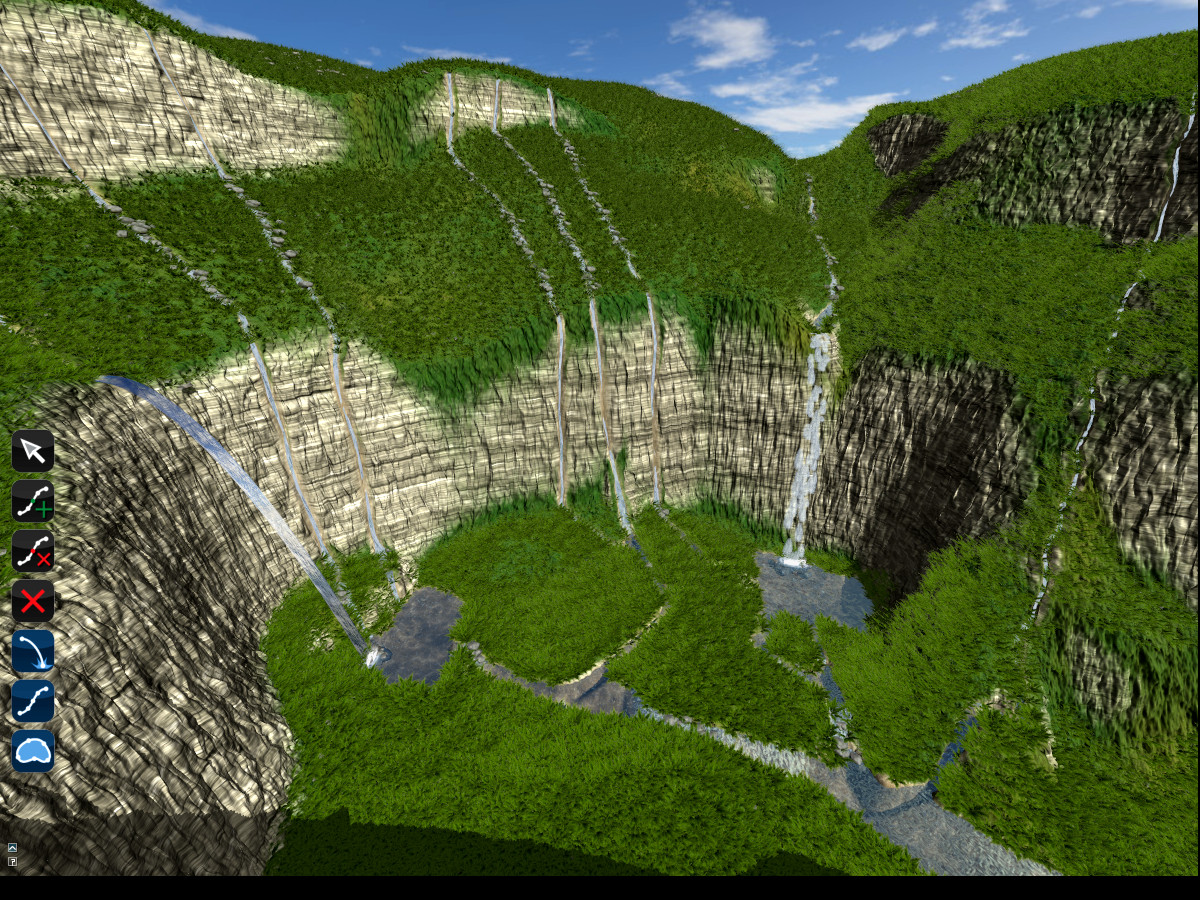Section: New Results
Creating and interacting with virtual prototypes
Sketch-based modeling
Participants : Marie-Paule Cani, Martin Guay, Rémi Ronfard.
The Line of Action [8] : The line of action is a conceptual tool often used by cartoonists and illustrators to help make their figures more consistent and more dramatic. In this paper, we proposed a mathematical definition of the line of action (LOA), which allows us to automatically align a 3D virtual character to a user-specified LOA by solving an optimization problem. This woek is now being extended to the more challenging case of creating complete animations from storyboard-like hand-drawn sketches (see fig. 10 ).
Sculpting methods
Participants : Marie-Paule Cani, Stefanie Hahmann, Damien Rohmer, Lucian Stanculescu.
Sculpting methods is a very powerful approach to design virtual models from an existing model. In the work of Lucian Stanculescu [13] we extend the standard sculpting paradigm of surfaces, to multi-dimensional nested structures. In this method, lower dimensional structures such as points and curves can be defined on the surface to defined a nested structure. Each part can follow a specific deformation behaviors. We therefore categorize the geometrical and topological behavior of the structure (such as rigidity or mutability) to develop a wider range of possible deformation. This method facilitate the persistence of sharp features that automatically split or merge with variable rigidity, even when the shape chages genus. This approach enable to deform a surface exhibiting typical behavior of both CAD model with sharp edges, and CG model with smooth surfaces as seen in fig. 11 .
|
We also extends the sculpting approach to handle detailed surfaces. During sculpting deformation such as local stretching, the surface details should not extend as the global shape, but rather duplicates to ensure that the surface keeps his detailed appearance. We studied this question under two different approaches.
The first one, in collaboration with Max-Planck Institute focussed on the deformation of 1D-like parametric structure such as castle walls of centripede characters. The method enable to freely extend, compress, split and merges parts of the structures. The deformed structure is generated by an assembly of basic parts whose behaviors are encoded using a discrete shape grammar. During deformation, the system finds the most suitable collection of parts to assemble and ensure that the global shapes is coherent with the input rules. This work as been published in Eurographics 2014 [10] .
The second approach consists in extending sculpting to continuous freeform deformation of a 2D surface with details. During the deformation gesture of stretching or compression, details on the surfaces should seamlessly appear or desappear continuously. In this work, we studied the simpler case of a planar surface with high field details and presented our result in GTMG [27] . We now work on the more general extention to this work as a collaboration with Max-Plack Institute and University of College London.
Interactive control of procedural models: terrains and waterfalls
Participants : Adrien Bernhardt, Marie-Paule Cani, Arnaud Emilien, Ulysse Vimont.
Procedural models, used for easily modeling large, natural environments, pose a specific challenge in terms of user control: how can these automatic methods, useful for quickly generating a huge number of self-similar details, be adapted to allow the coarse to fine level of control needed by the users?
This topic was first explored within Adrien Bernhard's PhD thesis [1] , where we introduced a real-time terrain modeling tool using a fast GPU-based terrain solver with a lightweight CPU-based data structure. This tool was recently extended in collaboration with Cambridge University, to enable first-person sketch-based editing of terrains models.
Secondly, we have been working on interactive procedural modeling of plausible waterfalls, in collaboration with Montreal University. Offering interactive user control for this application is particularly challenging, since the shape taken by a fall heavily depends on the underlying terrain. Our solution, based on vectorial user-control, on a flow solver, and on procedural adaptation of the underlying terrain, enable users to quickly create plausible flowing water, while controlling which fall segments are in contact with the terrain (vs. in free fall), the topology of the network, and how much the flow should adapt to the current terrain, vs. the terrain to the user-designed trajectories (fig. 12 ). A paper is under review and a presentation has been made at the AFIG conference [16] .
|
Interaction methods
Participants : Rémi Brouet, Marie-Paule Cani.
We are currently exploring the use of multi-touch tables for the interactive design and editing of 3D scenes, in collaboration with the human-computer interaction group of LIG laboratory. The main challenge here is to find out how to use a 2D interaction media for editing 3D content, hence how to intuitively control the third dimension (depth, non-planar rotations, 3D deformations, etc).
Our first work consisted in an user study where we analyzed all possible hand interactions on table-tops and explored the ways users would intuitively try to manipulate 3D environments, either for changing the camera position or for moving objects around [20] . We extracted a general interaction pattern from this study. Our implementation enables both seamless navigation and docking in 3D scenes, without the need for any menu or button to change mode. We are currently extending this work to object editing scenarios, where shapes are to be bent of twisted in 3D using 2D interaction.





